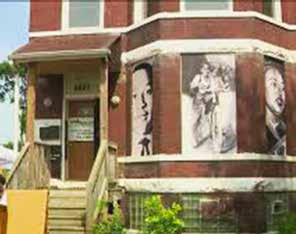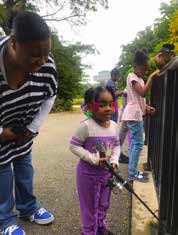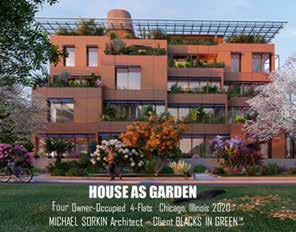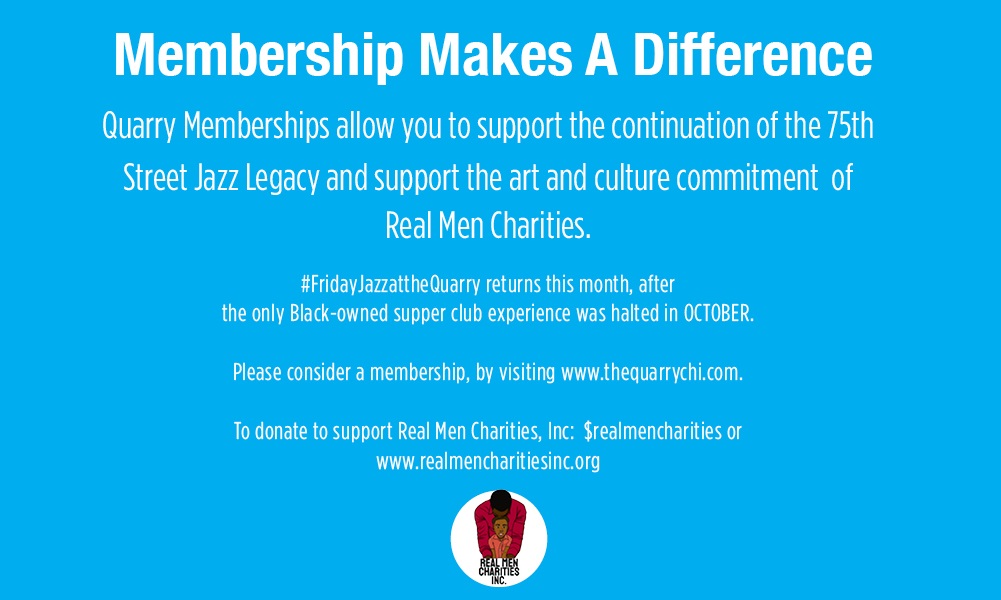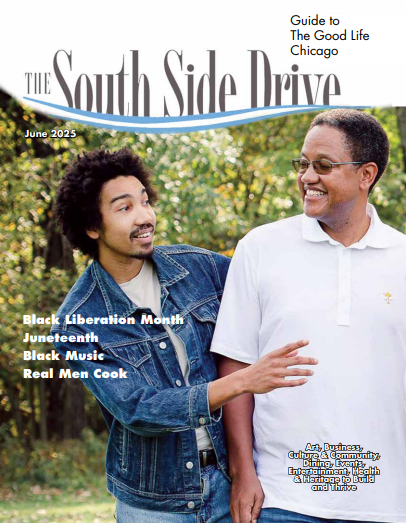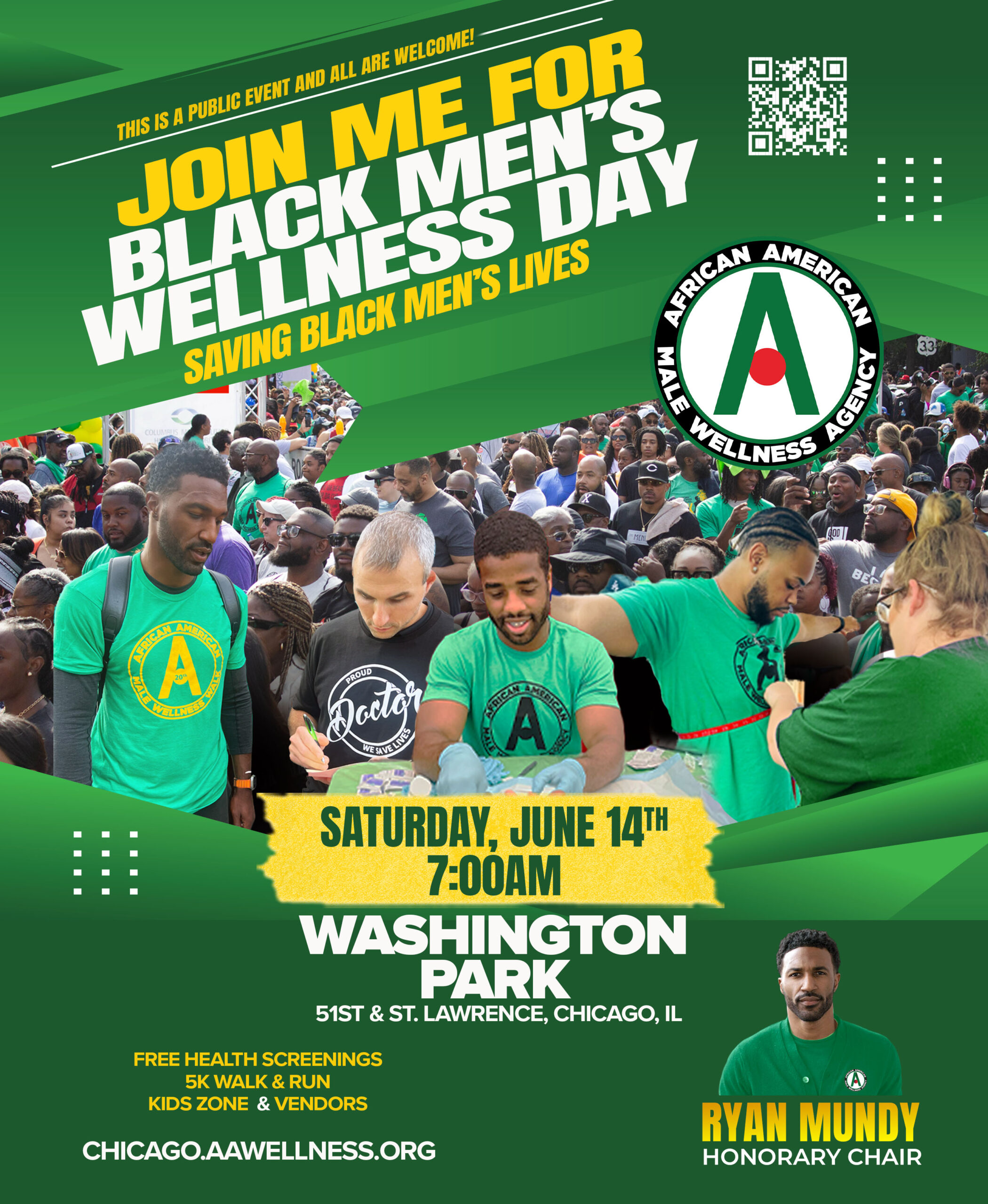
Naomi Davis, a native New Yorker, first came to Chicago to go to law school. After law school, she stayed on, living in various parts of the City. However,in 2020, she made the intentional move back to the South Side from where she was living on the North Side of Chicago. She explains “I felt a deep sense of longing for my community, for my people, and I knew that I would be leaving the beautiful, walkable convenience of the North Side neighborhoods where I had lived behind. The amenity-rich communities would not be found where I was headed.”
The year Naomi moved back to the South Side was the year she began to research what it meant to live in a self-sustaining Black neighborhood. “And that became the vision of Blacks in Green – self-sustaining neighborhoods everywhere,” she told me. Her mission became to develop a walk-to-work, walk-to-shop, walk-to-learn, walk-to-play village, where African Americans own the businesses, own the land, and live the conservation lifestyle.
For the first twelve years, Naomi’s dream was pursued by an all-volunteer organization. “We didn’t have any staff and we didn’t have any budget. The only budget was the budget I could pull out of my checking account,” she says. Yet she persisted. “We have doubled our income every year for the last four years,” she revealed, “and we’re on track to do it again.”
Her dream is to build 10,000 “Green Living Rooms across the country as the anchor for the place she calls the “sustainable square mile.” Their theme is “Where Black folk can walk to work, walk to shop, walk to learn, walk to play.”
Naomi says when she moved back to the South Side in 2000 and began researching; the problem seemed so big and so massive she asked herself “What can one person ever do?” “Of course, it is never one individual,” she admits. “But it was for me designing what I call a whole system solution for the whole system problem in Black communities everywhere, and that system is the Eight Principles of Green Village Building.”
Those eight principles of Green Village Building are:
1. WEALTH. Micro-Saving/Lending and Local Currency. Each village has its own measures, exchanges, and repositories of wealth.
2. ENERGY. Local Energy Production and Transportation. Each village produces its own energy for heat, light, and transportation.
3. PRODUCTS. Shopping and Waste. Each village supplies basic goods and services to neighbors, converting waste to wealth in the process.
4. HOMESTEAD. Affordable Green Homes and Gardens. Each village is sustained through jobs-driven development without displacement, providing middle-income housing and producing high-quality food through community land trust CDC’s.
5. CULTURE. News and Networks, Stories and Structures. Each village celebrates its past, present, and future culture through stories in print, digital, and theatrical forms.
6. ORGANIZATION. Village Centers and Borders. Each village is a walkable, self-sustaining whole with perceptible borders, inter-dependent local ties, global context, organized and in action for self-interest.
7. EDUCATION. Health, Education, and Welfare. Each village fosters life-long learning through hubs, which are epicenters for green training, development, and lifestyle transformation.
8. ECONOMY. Green Jobs & Enterprise. Each village circulates its wealth through neighbor-owned businesses which invent, invest, manufacture and merchandise locally.
The implementation of those eight principles has already begun with the development of the Sustainable Square Mile in Woodlawn. According to the 7th principle, “Each village fosters life-long learning through hubs, which are epicenters for green training, development and lifestyle transformation,” Blacks in Green launched its first Green Hub with the Green Living Room at 6431 South Cottage Grove. The slogan is “Coffee, Culture, Climate, Commerce.” “We are building a place where people can come, they can chill, they can be honored, they can relax,” Naomi told me, saying, “It’s gorgeous, it’s free computer access, free Wi-Fi, and free printing.” “There is also the Energy Bar for healthy food and snacks, the Green New Deal Emporium and Apothecary, where people can go to get their green goods and the things they want that are sustainably made beautiful for their homes as well as their health,” Naomi explains. There are two sides: the Lounge side and the Enterprise Hall side. In the Lounge area, which is where the Energy Bar and the Emporium and Apothecary are located, there is the Peanut Butter Square.This consists of beautiful peanut-butter colored leather couches. “People come here and chill and hang out and hold meetings,” said Naomi.
Within the amazing Green Living Room, there is also a stage, called the Store-Front Studio Stage, with lights and microphones and a sound system to accommodate any type of training, performance, presentation, or podcast one can imagine. “And then we have the big screen,” says Naomi, “where we achieve a rotation of Black entertainment, education, and documentaries.”
Blacks in Green has made a commitment to see Green Living Rooms proliferate like McDonald’s. “We’re planning 10,000 Green Living Rooms across the country as an anchor for the places we call the Sustainable Square Miles,” Naomi told me, “where we can create our own economies, and at the same time reduce greenhouse gas emissions. We are about the business of restoring the place of Black people in the world, and it is a deep love, passion, and calling.”
Blacks in Green has focused its energies and resources on building four economies:The Energy Economy, the Horticultural Economy (they own and maintain public gardens throughout their Sustainable Square Miles of West Woodlawn); the Tourism Economy, and the Housing Economy. Naomi notes, “We’ve got an award-winning housing product called “House as Gardens,” and it is revolutionary in so many ways. We are doing an affordable, owner-occupied four-flat, with leading-edge green technology, and it is designed for the Black middle income first, as well as low to moderate-income tenants.” Naomi states that although they haven’t built it yet, it was designed by the internationally renowned architect Michael Sorkin, who unfortunately died of COVID in March 2020.
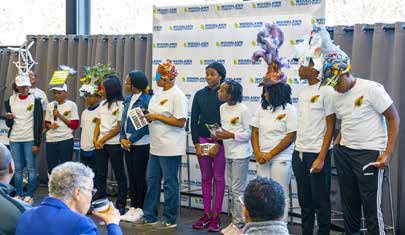
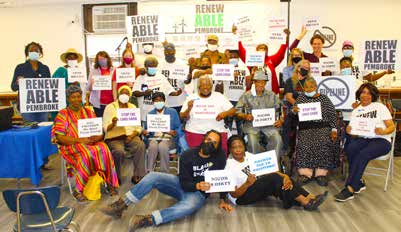
Speaking of COVID, Blacks in Green famously opened on October 1, 2019, with thousands of visitors, almost 100 different programs and events, and partnerships with scores of community organizations. It then suddenly shuttered in March 2020 due to COVID, along with the George Floyd uprisings. As a result, they had to reinvent their entire business model, because as Naomi puts it, “We were a public house no more.” But, she adds, “God was with us and helped us not only to keep our doors open but to rise and to grow. And since then, we’ve added another thousand square feet upstairs for office space for our staff, and we’re not only adding a third space for a production studio to keep driving our own original content and narrative out to the self-interest of Black Chicago, but we’re also buying the building and the building next door.”
The social enterprises in development in the Blacks in Green system are:
- Till-Mobley House Museum
- BIG Clean Power
- BIG Urban Homesteads
- BIG Botanic Gardens &Farms
- BIG Treasure Tours
- BIG Green Living Room
- BIG Village in a Box CDC
- BIG Community Land Trust
- Black Urban Policy & Planning
- Green Power Alliance.
Blacks in Green purchased the former home of Emmett and Mabel Till-Mobley, located at 6427 South St. Lawrence in October of 2020. Naomi relates the story, as told by one of Till’s family members, that Emmett had implored his mother to let him go South. “He had to make a little case like he was a little lawyer,” Naomi said. “And he built a case that why shouldn’t she let him go? She was always saying that he should know his family members and wasn’t this the perfect way for him to be able to connect with and meet his family members? And of course, finally, she relented and agreed that he could go, and he left for his death.” She continues, “It puts a different kind of horror on the Emmett Till murder, but the flip side of that horror is, isn’t it the truth that millions of us were sent South for the summer? That was the thing. Many people across America, particularly those who are not from Black culture, don’t realize sending our kids South for the summer was a very well-worn tradition in the Black community.” Naomi told me that during the summers of her youth, she was sent south to Arkansas to her father’s side, and to Memphis, to which her mother’s family first migrated.
Blacks in Green Responding
to Chicago Mayor’s RFI
Blacks in Green is responding to a Request for Information that Mayor Lori Lightfoot has issued as the City is in the process of renegotiating the Comed electricity franchise “This is game-changing,” declared Naomi, “because de-carbonizing our society or taking the fossil fuel carbon out of the atmosphere means we’re taking it out of buildings, we’re taking it out of residences. Blacks in Green has a citywide campaign that we are launching to de-carbonize the buildings in Chicago, but prioritizing that Blacks and Browns must benefit first.
So, the idea that we are using ten years of work that we have done leading up to the passage of the Climate Equity Job Pact, ten years at the table in the game, talking, negotiating, banging our shoes on the table when required, and reaching back and letting our community members know what’s working, what’s not working for Black folk at this table is historic. We are now in a position to say to the City of Chicago, we are ready to respond to this Request for Information to build a clean energy micro-grid in our home community of West Woodlawn with partners who understand what we call the new terms of engagement for climate equity collaboration. That means we, as Black and Brown people, are not taking second chair on solutions for our community.” Black people being in the position of solving problems of Black people is, in Naomi’s words, historic. “We know that in the history of humanity, white folks have never solved the problem for Black folks and never will in the same way Blacks in Green is calling for Black contractors, for Black communities, we’re calling for Black solutions by Black leaders for Black communities, and that is a marked change. That is a role reversal for what we have historically seen in the ‘help the Negro’ industry.” And that, she explains is why Blacks in Green is really grateful to Mayor Lightfoot for the opportunity for new ideas to come into the utility space, and the same kind of deep tissue realignment is needed in our other utilities – heat, broadband, water, and especially water where Blacks in Green is so deeply involved.”
On October 1, 2021, Blacks in Green will introduce their Black Energy Justice Program. Naomi explains, “We are looking at how we are going to reshape the business model that we have been constrained by, because clean energy ain’t justice – only justice is justice and we’re making sure that we can audit where the money is going and see that all of this money cascading down is actually going where it’s intended, and that is helping to level the playing field of Black and Brown folk who have been harmed disproportionately by the impact of global warming.”
Also on October 1, Blacks in Green will launch their Lunch and Learn Series,where they will be talking more about this RFI from the City, and why it is so historic. She noted that the Lunch and Learn series is going to be available on all social media channels, including Blacks in Green. org, Facebook, Twitter, Instagram, and LinkedIn. “You’re going to be able to click on programming and get your education and inspiration on,” she says, “You’re going to be able to download fact sheets and fillable forms and be a part of a cohort that is going to walk you through what you need to get yourself paid and participating as a body, as a voice.” Naomi explains that the Black Energy Justice Program is functioning to make sure that we’re getting the facts. For example, they are auditing and reviewing all disconnections, collections functions, and everything that is income-based or equity-based in programs that our utility is running. Every other Friday, the first and third Friday of every month, Blacks in Green will produce their Green Economy Academy lesson in “How to Get Yours from the New Climate Equity Bill.” For more about this amazing organization, visit BlacksinGreen.org.
